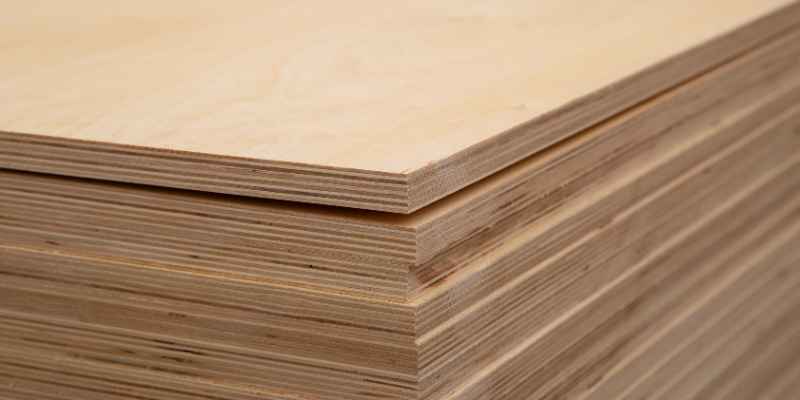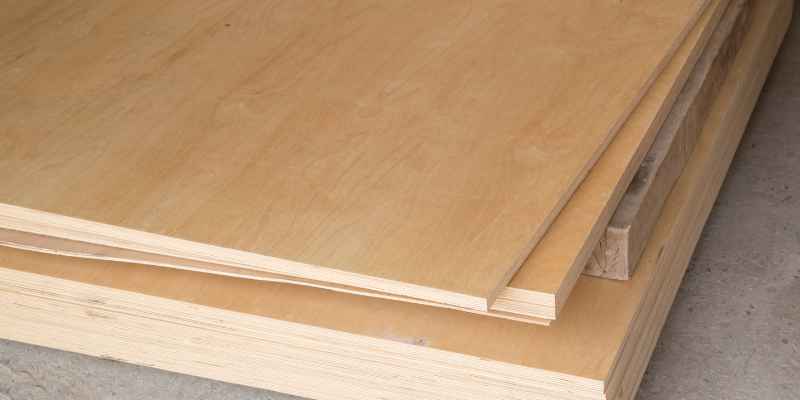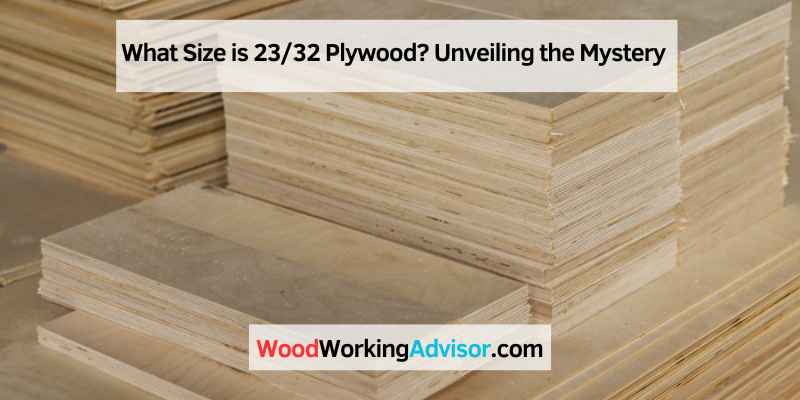23/32 plywood is typically 23/32 inches thick, which is about 18.25 millimeters. This size is commonly used in construction projects for its strength and durability.
Plywood is a versatile building material that comes in various sizes and thicknesses. The 23/32 plywood size is a popular choice for structural applications due to its sturdiness and ability to support heavy loads. Whether you are working on a DIY project or a professional construction job, 23/32 plywood can provide the strength and stability you need.
In this blog post, we will explore the uses, benefits, and considerations of using 23/32 plywood in your next building project. Let’s dive in and discover why this plywood size is a go-to option for many builders and contractors.
Introduction To Plywood Sizing
The Basics Of Plywood Dimensions
Plywood comes in various sizes, typically ranging from 4×8 feet to 5×5 feet. The standard thicknesses include 1/4 inch, 1/2 inch, and 3/4 inch. These dimensions are commonly used in construction, carpentry, and DIY projects.
Why Non-standard Sizes Like 23/32 Exist
Non-standard plywood sizes, such as 23/32, are often the result of manufacturing processes and industry standards. These sizes are engineered to meet specific project requirements and are commonly utilized in specialized construction and woodworking applications.
Deciphering The 23/32 Plywood Size
Are you puzzled by the 23/32 plywood size? Let’s break it down.
Comparing Thickness: 23/32 Vs. Standard Sizes
23/32 plywood is slightly thicker than the standard 3/4-inch plywood.
The difference may seem negligible, but it could impact your project’s structural integrity.
Understanding The Fraction: What Does 23/32 Mean?
The fraction 23/32 represents the actual thickness of the plywood sheet in inches.
It’s important to comprehend this fraction to make informed decisions for your woodworking projects.
Manufacturing Process And Size Variations
23 32 plywood is a commonly used size in the manufacturing process. The size variation of plywood depends on the thickness and number of plies, with 23 32 plywood typically being 23/32 inches thick and having multiple plies.
How Plywood is Made
The manufacturing process of plywood involves several stages. Log debarking is the initial step, followed by peeling the logs into thin veneers. These veneers are then dried to the required moisture content. After that, the veneers are sorted and graded based on their quality. The next step involves gluing the veneers together to form the plywood panel. Finally, the panels are pressed under high temperature to ensure bonding.
Factors Contributing to Size Discrepancies
Several factors can contribute to size discrepancies in plywood. Moisture content in the wood can cause the plywood to expand or contract, resulting in size variations. Additionally, temperature changes during manufacturing and storage can also impact the dimensions of the plywood. Furthermore, cutting and sanding processes can lead to slight size variations in the finished product.
In summary, plywood is manufactured through a series of processes that involve log debarking, peeling, drying, sorting, grading, gluing, and pressing. Size discrepancies in plywood can be attributed to factors such as moisture content, temperature changes, and cutting processes.
Applications For 23/32 Plywood
23/32 plywood is a versatile material with a variety of applications in construction and woodworking. Its specific thickness makes it suitable for a range of projects requiring strength and durability.
Ideal Uses For This Thickness
- Subflooring in residential and commercial buildings
- Roof decking for homes and structures
- Sheathing for walls and roofs
- Outdoor projects like sheds and playhouses
Projects Where 23/32 Plywood Shines
- Building sturdy furniture pieces
- Constructing strong cabinets and shelves
- Creating durable workbenches and tables
- Designing long-lasting outdoor structures
Measuring And Cutting 23/32 Plywood
23/32 plywood is a common size of plywood used in construction and DIY projects. This size is equivalent to ¾ inch in thickness and is often used for subflooring, roofing, and exterior sheathing. When measuring and cutting 23/32 plywood, it is important to use accurate tools and take proper safety precautions.
Tools For Accurate Measurement
To measure 23/32 plywood accurately, you need to have the right tools. The following tools are essential for accurate measurement:
- A measuring tape or ruler
- A framing square
- A chalk line
A measuring tape or ruler is necessary for measuring the length and width of the plywood. The framing square is used to ensure that the corners of the plywood are square. The chalk line is used to mark straight lines for cutting.
Tips For Precise Cutting
To ensure precise cutting of 23/32 plywood, follow these tips:
- Measure twice, cut once. Double-check your measurements before cutting to avoid mistakes.
- Use a sharp saw blade. A dull blade can cause the plywood to splinter.
- Support the plywood. Use sawhorses or a workbench to support the plywood while cutting.
- Make a starter hole. Use a drill to make a small hole at the beginning of your cut to prevent splintering.
- Cut slowly. Take your time and cut at a steady pace to ensure a smooth cut.
By following these tips and using the right tools, you can cut 23/32 plywood with precision and accuracy. Remember, accurate measurement and precise cutting are crucial for any woodworking project.
Availability And Buying Guide

Discover the right size for 23/32 plywood with this comprehensive availability and buying guide. Make informed decisions when purchasing plywood for your project needs.
Where To Find 23/32 Plywood
If you’re looking for 23/32 plywood, you’ll be pleased to know that it’s a relatively common size. You can find it at most major home improvement stores, such as Home Depot, Lowe’s, and Menards. You can also find it at specialty lumber stores or online retailers. When searching for 23/32 plywood, be sure to check the grade and type of wood to ensure it meets your project’s needs.
Cost Comparison With Other Sizes
When comparing the cost of 23/32 plywood to other sizes, it’s important to consider the grade and type of wood. However, in general, 23/32 plywood falls in the mid-range of plywood prices. It’s more expensive than thinner plywood, such as ¼ inch or ½ inch, but less expensive than thicker plywood, such as 1 inch or 1 ½ inch. Keep in mind that the cost may vary depending on where you purchase the plywood and the current market conditions.
Tips For Buying 23/32 Plywood
When purchasing 23/32 plywood, there are a few things to keep in mind. First, determine the type of wood you need for your project. Plywood can be made from a variety of woods, each with its own unique characteristics. Second, check the grade of the plywood to ensure it meets your project’s needs. Plywood is graded based on its appearance, strength, and durability. Finally, inspect the plywood for any defects, such as knots or warping. These can affect the strength and appearance of your finished project.
In conclusion, 23/32 plywood is a versatile and readily available size for a variety of projects. By knowing where to find it and what to look for when purchasing it, you can ensure your project is a success.
Working With 23/32 Plywood
When handling 23/32 plywood, it’s essential to follow proper guidelines to ensure optimal results.
Handling And Storage Best Practices
- Store plywood in a cool, dry place away from direct sunlight.
- Avoid placing heavy items on top of the sheets to prevent warping.
- Use a flat surface to store plywood sheets horizontally to maintain their shape.
Joining Techniques For This Thickness
- For 23/32 plywood, use wood glue for seamless bonding.
- Utilize screws or nails for added reinforcement in joining pieces together.
- Consider using a biscuit joiner for precise alignment when connecting multiple sheets.
Alternatives To 23/32 Plywood

When To Opt For A Different Thickness
Consider other thicknesses based on project requirements.
Comparative Strengths And Weaknesses
Examine pros and cons for informed decision-making.
Frequently Asked Questions
What Are The Dimensions Of 23/32 Plywood?
23/32 plywood typically measures 0. 703 inches in thickness. The standard dimensions for a sheet of 23/32 plywood are 4 feet by 8 feet, but it can also be found in smaller sizes.
How Much Does 23/32 Plywood Weigh?
The weight of 23/32 plywood can vary depending on the type of wood used, but it is generally around 2. 5 pounds per square foot. This means that a standard 4×8 sheet of 23/32 plywood weighs approximately 80 pounds.
Is 23/32 Plywood Good For Subflooring?
Yes, 23/32 plywood is commonly used for subflooring. Its thickness provides sufficient strength and stability to support flooring materials and withstand heavy loads. It is important to ensure proper installation and consider any specific requirements or recommendations from flooring manufacturers.
Can 23/32 Plywood Be Used For Outdoor Projects?
Yes, 23/32 plywood can be used for outdoor projects. However, it is important to choose a type of plywood specifically designed for exterior use, such as pressure-treated or marine-grade plywood. These types of plywood are treated to resist moisture, rot, and insect damage, making them suitable for outdoor applications.
Conclusion
To summarize, understanding the size of 23 32 plywood is crucial for any construction or DIY project. This versatile material offers strength and durability, making it a popular choice among builders and craftsmen. By knowing the dimensions and specifications of 23 32 plywood, you can ensure precise and efficient work.
Whether you are building furniture or working on a home renovation, this information will guide you in selecting the right plywood for your needs. Make informed decisions and create exceptional results with the correct size of 23 32 plywood.


